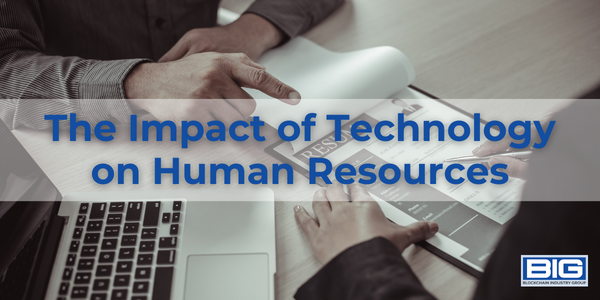
The main function of HR (Human Resources) is to manage the people who work for an organization. This includes tasks such as hiring and onboarding new employees, providing training and development opportunities, managing compensation and benefits, and overseeing employee relations. HR professionals are responsible for ensuring that the organization is staffed with the right people, and that those people have the skills and support they need to succeed in their roles. HR is also responsible for ensuring that the organization is compliant with relevant employment laws and regulations, and that all employees are treated fairly and with respect.
In hiring and onboarding, technology such as artificial intelligence and machine learning can be used to automate many of the administrative tasks involved in hiring and onboarding, such as resume screening, scheduling interviews, and generating offer letters. Virtual communication tools like video conferencing can enable remote interviews and onboarding, allowing organizations to hire and onboard employees from anywhere in the world. Data and analytics can be used to collect and analyze data on the effectiveness of different hiring and onboarding practices, and personalized onboarding experiences can be created using learning management systems or other technologies.
In training and development, technology can be used to create more interactive and engaging training experiences, such as through the use of virtual and augmented reality, gamification, and other immersive technologies. Technology can also be used to deliver training remotely, allowing employees to learn new skills from anywhere and at their own pace. Data analytics can be used to track and measure the effectiveness of training programs, allowing organizations to fine-tune their training efforts and allocate resources more effectively. Additionally, technology can be used to create personalized learning plans for individual employees, helping them to focus on the skills and knowledge that are most relevant to their roles.
In compensation and benefits, technology can be used to automate the processing and tracking of employee pay and benefits, reducing the workload for HR professionals and improving accuracy. Technology can also be used to create more personalized and flexible benefits packages for employees, allowing them to choose the benefits that are most relevant to their needs. Data analytics can be used to track and measure the effectiveness of different compensation and benefits programs, allowing organizations to make data-driven decisions about how to allocate resources. Additionally, technology can be used to create more transparent and fair compensation practices, such as through the use of pay equity software that helps to identify and address pay disparities.
In employee relations, technology can be used to create more efficient and effective communication channels between HR professionals and employees, such as through the use of HR management software and collaboration tools. Technology can also be used to automate and streamline the resolution of employee issues and concerns, such as through the use of chatbots and other AI-powered tools. Data analytics can be used to track and measure employee satisfaction and engagement, allowing HR professionals to identify and address any issues that may be affecting morale. Additionally, technology can be used to create more transparent and fair policies and practices related to employee relations, such as through the use of anonymous feedback platforms.
The Secret to Writing a Killer Offer Letter: A Guide to Winning Top Talent
—
The Secrets to Employee Termination: Unveiling the Factors for Job Loss
—
The Unspoken Rules of Job Interviews: Navigating Subtle Dynamics for Success
In legal compliance, technology can be used to automate and streamline the tracking and management of employee records and documents, such as through the use of HR management software and electronic signature platforms. Technology can also be used to create more efficient and effective systems for training employees on legal compliance issues, such as through the use of online learning platforms. Data analytics can be used to identify and monitor trends and patterns related to legal compliance issues, allowing HR professionals to proactively address any potential risks or concerns. Additionally, technology can be used to create more transparent and fair policies and practices related to legal compliance, such as through the use of anonymous reporting systems. Overall, technology is likely to lead to significant improvements in the efficiency, fairness, and effectiveness of the legal compliance function in the HR department.
Technology is likely to play a critical role in the future of human resource departments. Technology can be used to automate and streamline many HR functions, such as hiring and onboarding, training and development, compensation and benefits, employee relations, and legal compliance. It can also be used to create more interactive and engaging experiences for employees, to deliver training and support remotely, and to track and measure the effectiveness of HR practices. By leveraging technology, HR departments can become more efficient, effective, and responsive to the needs of employees, and can better support the overall goals and objectives of the organization. As such, technology will be an important factor in the future success of HR departments, and it will be important for HR professionals to stay up-to-date with the latest technology and trends in order to stay competitive.



